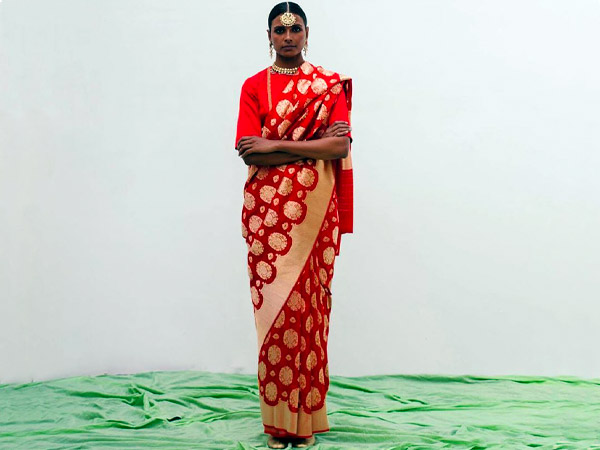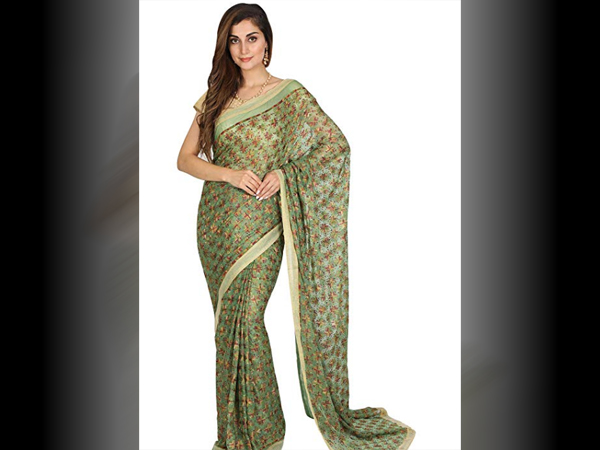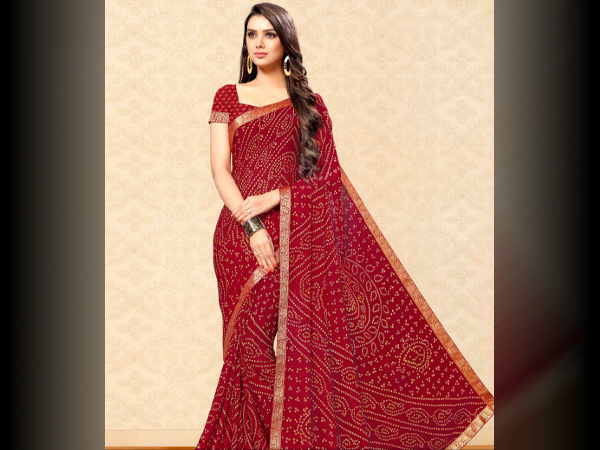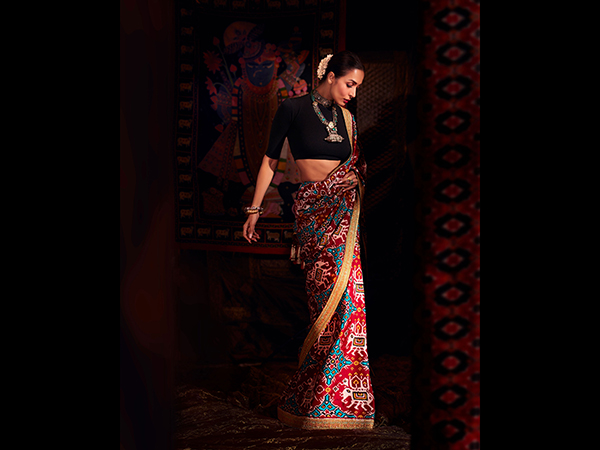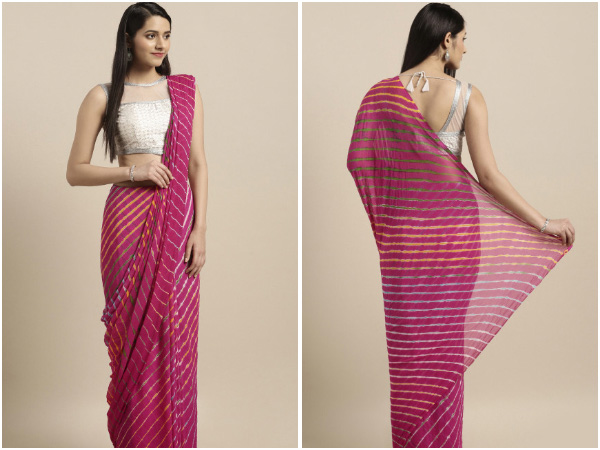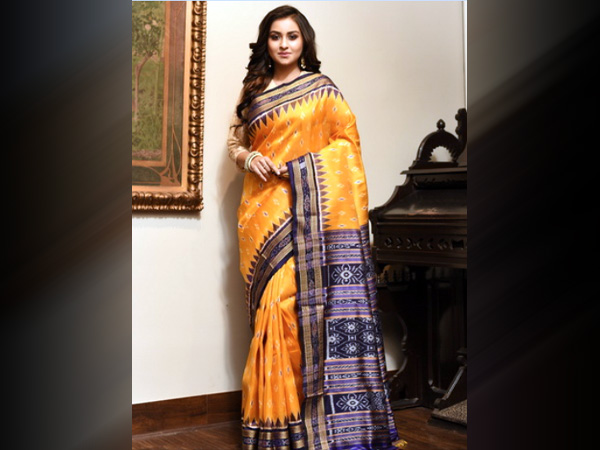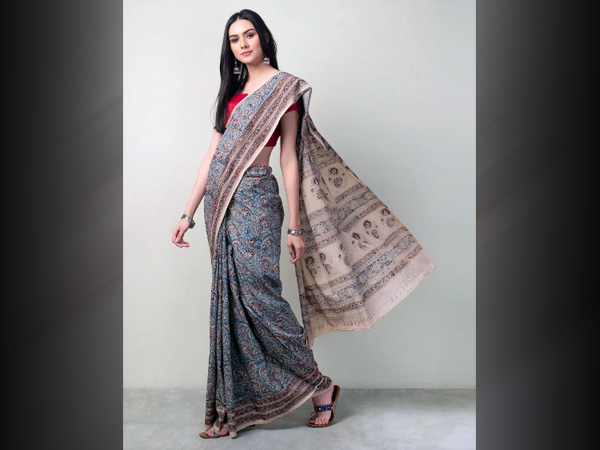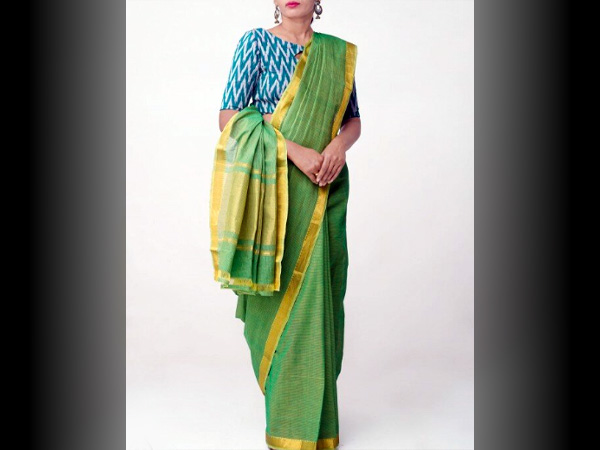Just In
- 23 min ago

- 2 hrs ago

- 10 hrs ago

- 10 hrs ago

Don't Miss
- News
 Odisha Boat Tragedy: Four Dead, Search Continues For Missing Passengers
Odisha Boat Tragedy: Four Dead, Search Continues For Missing Passengers - Movies
 Paarijatha Parvam Full Movie Leaked Online In HD For Free Download Hours After Its Theatrical Release
Paarijatha Parvam Full Movie Leaked Online In HD For Free Download Hours After Its Theatrical Release - Technology
 itel S24 With 108MP AI Dual Camera India Launch Confirmed; Amazon Microsite Goes Live
itel S24 With 108MP AI Dual Camera India Launch Confirmed; Amazon Microsite Goes Live - Finance
 Daily Relative Strength Index RSI In A Bullish Mode of This Pharma Stock; Buy For TP Rs 635-685
Daily Relative Strength Index RSI In A Bullish Mode of This Pharma Stock; Buy For TP Rs 635-685 - Sports
 RCB Green Jersey Match: Record And Stats Ahead of KKR Meeting in IPL 2024
RCB Green Jersey Match: Record And Stats Ahead of KKR Meeting in IPL 2024 - Automobiles
 Mahindra XUV 3XO SUV – Everything We Know So Far
Mahindra XUV 3XO SUV – Everything We Know So Far - Education
 Exam Pressure Does Not Exist; Studying Punctually is Crucial; Says Aditi, the PSEB 2024 Topper
Exam Pressure Does Not Exist; Studying Punctually is Crucial; Says Aditi, the PSEB 2024 Topper - Travel
 Journey From Delhi To Ooty: Top Transport Options And Attractions
Journey From Delhi To Ooty: Top Transport Options And Attractions
17 Types Of Regional Saris From India That Should Be A Part Of Your Wardrobe
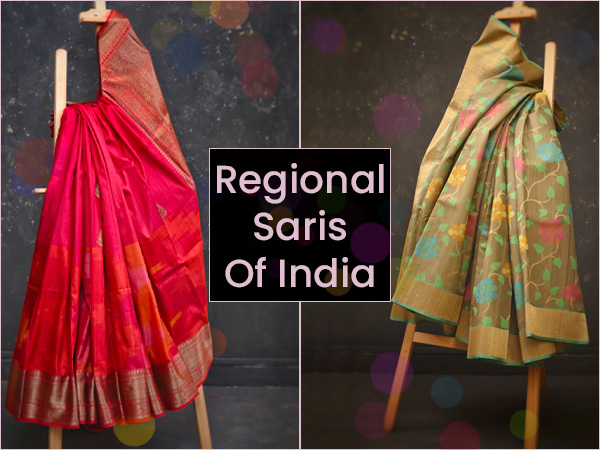
Sarees are among the oldest and anti-structure wears of India. The fluid garment can be draped in more than 100 ways and India has a rich legacy of saris. While there is a flood of contemporary saris in India but it is significant to know about the regional age-old saris. The reason being that traditional saris can never lose charm and are always relevant, unaffected by the general trends. Apart from the relevance, the other reason is that these saris can make you look a class apart on weddings or any other function. Here are 17 regional saris that we have discussed.
1. Chikankari Sari From Lucknow
The capital of Uttar Pradesh, Lucknow is famous for chikankari work and the chikankari saris are just exquisite. Chikankari work is related to delicate hand embroidery and done on variety of textiles including organza, muslin, cotton, etc. It is done using white thread but these days, colourful threads are also used for the embroidery. A chikankari sari is rare and if you drape it, well be sure to make heads turn.
2. Banarasi Sari From Varanasi
Banarasi saris are mostly preferred for wedding and other festive occasions. A Benarasi brocade sari is among the favourite garments of the Indian brides. Crafted out of silver or gold zari work on silk fabric, this sari can easily make you look regal and resplendent. Talking about royal inspiration, the weavers mostly incorporate Mughal-inspired patterns on this sari like jhallar.
3. Phulkari Sari From Punjab
Phulkari sari relates to floral inspiration and it is an intricate hand-embroidered delight from Punjab. Phulkari dupattas and suits are usually worn on ceremonies including marriage. However, you can take a step ahead and drape a rich phulkari sari. With this you will not only promote a handicraft but also look vibrant. Phulkari sarees are more or less enhanced by bright hues.
4. Bandhani Sari From Gujarat
Bandhani saris are the most popular in Gujarat and it is a technical process involving dyeing a fabric and tying it. Bandhani saris have specific hues too like red, yellow, green, and black, and so these saris are vibrant but also exude understated effect. So, in case, you don't want to wear something heavy but look amazing, bandhani saris are perfect for you.
5. Patola Sari From Gujarat
Made in Patan, Gujarat, Patola saris are double ikat woven saris and are among the most regal saris of the Indian subcontinent, as they are mostly donned by the rich and aristocratic. In Gujarat, Patola saris are gifted to brides and the motifs of the Patola saris are mostly geometric, artistic, and very colourful. These saris are pretty expensive and so should be reserved for grand events.
6. Leheriya Sari From Rajasthan
Like Bandhani saris, leheriya saris of Rajasthan are also a result of tie and dye effect. The dyeing technique produces waves-like pattern and so this is why it is called leheriya sari. Leheriya saris are often light and colourful (usually dual-toned and striped) and so this style of sari can be donned as a day-to-day wear and even on different occasions.
7. Kota Silk Sari From Rajasthan
Made in Rajasthan, Kota silk saris are among the most popular saris of India. These saris are made out of zari threads and have characteristic square-shaped checks pattern. However, these saris are also highlighted by Jaipuri prints and have block patterns. These saris are light and can be draped for occasions such as sangeet and reception.
8. Chanderi Sari From Madhya Pradesh
Chanderi saris are so called because they are produced in Chanderi region of Madhya Pradesh. These saris are transparent with sophisticated sheen. Motifs on Chanderi saris are usually nature-inspired and these saris can be worn on festive or even as office wear. Chanderi saris are among the finest saris in India.
9. Bomkai Sari From Odisha
Bomkai saris also like Chanderi saris were first made in the Bomkai village of Odisha. The speciality about Bomkai saris are that ancient belief is depicted in these saris. These saris are usually dyed in the hues of red, black, and white but these days, a number of other colours are also used. Bomkai saris are usually worn on ceremonies. For instance, Aishwarya Rai wore a Bomkai sari for her wedding.
10. Kalamkari Sari From Andhra Pradesh
Kalamkaris saris are becoming quite popular these days and well, kalamkaris are ideal for any occasion. The motifs on kalamkari saris are sketched using tamarind twigs and the motifs usually depict scenes from Mahabharata and Ramayana. Hues such as indigo, rust, and black are used while making kalamkari saris.
11. Mangalagiri Saris From Andhra Pradesh
Produced mainly in Mangalagiri, Andhra Pradesh, Mangalagiri saris are perfect for those who want to keep it understated and simple. These saris can be draped for almost any occasion or no-occasion at all. The unique aspect about these saris are that Mangalagiri saris have no woven design on the main body but the border of the sari and pallu is accentuated by zari work.
12. Paithani Saris From Maharashtra
Paithani saris are considered one of the most expensive saris of India and have originated in the Paithan town of Aurangabad, Maharashtra. Made of silk and zari, the essence of Buddhist paintings and nature-inspired patterns can be mostly seen in Paithani saris. Peacock motifs can be usually seen on the pallu of Paithani saris. These saris are perfect for grand occasions.
13. Mysore Silk Sari From Karnataka
Mysore in Karnataka is where silk is mainly produced and Mysore silk sari is a patent KSIC sari. Made from Mulberry silk, these saris were first produced during the reign of Tipu Sultan. These saris are made out of pure silk with zari borders. It is usually single-toned and motifs may or may not be a part of the sari. Mysore silk saris are simple in design and so can make for an ideal off-duty wear too.
14. Kasavu Sari From Kerala
A part of bride's trousseau, Kasavu sari is the cream and gold sari. Mostly donned on Onam and weddings, Kasavu sari holds a great cultural significance in Kerala. It is a simple cream-toned sari but the sparkling gold zari border accentuates the sari. Over the years, kasavu sari has become very popular. For instance, Sonam Kapoor donned Kasavu sari in the movie, Aisha.
15. Kanjeevaram Sari From Tamil Nadu
Tamil Nadu is famous for Kanjeevaram saris and these saris are among the most demanded saris. You must have seen veteran actress Rekha in Kanjeevaram saris on a number of occasions. Kanjeevaram saris are important part of religious and wedding ceremonies. These saris usually depict temple designs and are rich in hues with zari borders.
16. Tant Sari From West Bengal
A traditional Bengali Sari, tant sari is perfect for summers and since the summer season is around the corner, you know which sari to invest in. This type of sari is woven in cotton threads and it is light and airy. There are a number of motifs that are incorporated on tant saris, right from elepahnt motifs to checkered patterns.
17. Muga Silk Sari From Assam
Muga silk saris are famous for their yellowish-golden tint and can make you look regal and sophisticated in an instant. However, these days, Muga silk saris come in variety of hues. Muga silk saris have shimmering texture but it takes around 2-3 months to make this sari. Tree and pigeon motifs are among the primary motifs that adorn muga silk sari. So, if you are looking forward to attending a wedding, this is the sari for you.
So, which sari will you pick and choose, if given an option? Let us know that in the comment section.
-
 fashionTamannaah Bhatia To Taapsee Pannu, B-Town Divas Are Giving Modern Twist To Classic Sarees, Get Inspired!
fashionTamannaah Bhatia To Taapsee Pannu, B-Town Divas Are Giving Modern Twist To Classic Sarees, Get Inspired! -
 fashionHoli 2024: 7 Vibrant Saree Ideas For Colourful Celebrations, And These Are Bollywood Approved!
fashionHoli 2024: 7 Vibrant Saree Ideas For Colourful Celebrations, And These Are Bollywood Approved! -
 fashion7 Bollywood Approved Cocktail Saree Ideas To Elevate Your Wedding Style
fashion7 Bollywood Approved Cocktail Saree Ideas To Elevate Your Wedding Style -
 fashionRepublic Day 2024: 5 AI Generated Saree Styling Ideas For A Fashionable And Patriotic Tribute
fashionRepublic Day 2024: 5 AI Generated Saree Styling Ideas For A Fashionable And Patriotic Tribute -
 fashion6 Unique Saree Draping Ideas Inspired By Bollywood Celebs To Steal The Spotlight
fashion6 Unique Saree Draping Ideas Inspired By Bollywood Celebs To Steal The Spotlight -
 fashionYear Ender 2023: Saree Styles That Will Continue To Rule Your Indian Wardrobe In 2024
fashionYear Ender 2023: Saree Styles That Will Continue To Rule Your Indian Wardrobe In 2024 -
 fashionDiwali Style Guide 2023: Your Modern Saree Blouse Guide To Ace The Diwali Party Look, Bollywood Inspired!
fashionDiwali Style Guide 2023: Your Modern Saree Blouse Guide To Ace The Diwali Party Look, Bollywood Inspired! -
 fashionKarwa Chauth 2023: Your Ethnic Saree Guide To Slay The Special Day, Get Ready Bollywood Style!
fashionKarwa Chauth 2023: Your Ethnic Saree Guide To Slay The Special Day, Get Ready Bollywood Style! -
 fashionDurga Puja 2023: Rani Mukerji, Kajol, Hema Malini And Others Look Fabulous In Ethnic Ensembles, Get Inspired!
fashionDurga Puja 2023: Rani Mukerji, Kajol, Hema Malini And Others Look Fabulous In Ethnic Ensembles, Get Inspired! -
 fashionNavratri 2023: Peacock Green Traditional Outfit Tips For Day 9, The Best Style Guide From B-Town Beauties!
fashionNavratri 2023: Peacock Green Traditional Outfit Tips For Day 9, The Best Style Guide From B-Town Beauties! -
 fashionNavratri 2023: Purple Festive Outfit Ideas For Day 8, Get The Style Dose From B-Town Divas!
fashionNavratri 2023: Purple Festive Outfit Ideas For Day 8, Get The Style Dose From B-Town Divas! -
 fashionDurga Puja 2023: Top 7 Types of Bengali Sarees To Ace Your Traditional Style
fashionDurga Puja 2023: Top 7 Types of Bengali Sarees To Ace Your Traditional Style


 Click it and Unblock the Notifications
Click it and Unblock the Notifications


